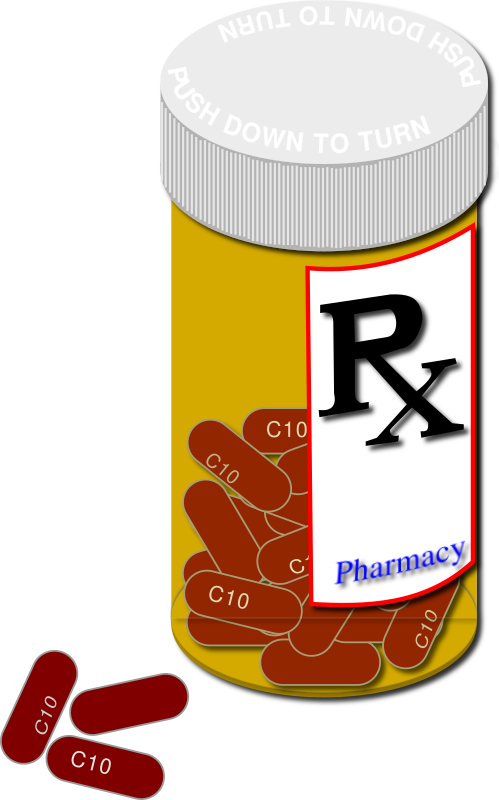On this day 4 of fibromyalgia week, I am going to focus my writing on treatments for this
mysterious condition. As discussed in earlier posts, this condition tends to be chronic --and while it is debilitating, it is not life threatening. There is no inflammatory process involved either.
mysterious condition. As discussed in earlier posts, this condition tends to be chronic --and while it is debilitating, it is not life threatening. There is no inflammatory process involved either.
Pharmacotherapy for fibromyalgia
Drug treatment for fibromyalgia is still sort of in the trial and error phase. There has been good response to some of the SSRI and tricyclic antidepressants to date. Other drugs that have some use in fibromyalgia are NSAIDs (ibuprofen for example), COX 2 inhibitors (a specific category of NSAID such as celecoxib) and antiepileptics (eg Gabapentin). There have been some trials of naltrexone and also Immune Globulin . To date, these last two studies look promising but at this point they are not conventional therapy. At one time, guaifenesin was thought to be promising but there is no clinical or scientific data to support its use as a treatment for fibromyalgia. In addition to drug therapy, there are a few other "modes" of therapy that are part of conventional therapy: diet, exercise, and complementary/alternative medicine.
Dietary guidelines for fibromyalgia
It has been noted that fibromyalgia symptoms may worsen with poor diet. There is no specific diet for fibromyalgia, but it is recommended that clinicians ask their patients to keep a food journal for a couple of weeks. It is recommended that patients eliminate alcohol and tobacco and slowly wean themselves off caffeine. It is not uncommon that patients with fibromyalgia eat a lot of carbohydrate rich foods, which are thought to contribute to worsening of symptoms. Some investigators suggest that a diet that is high in fresh vegetables, fish, and fiber. Green leafy and yellow vegetables are most preferred because they tend to have lower carbohydrate content. Some fruits are have a higher glycemic load than others; prudent choices include citrus, apples,berries, cantaloupe, and peaches. Carbohydrates are absorbed more slowly if it is eaten with something that has some fat or fiber-- reduced fat cheese with high fiber crackers is a good example. Avoiding junk foods helps to eliminate unwanted sugar, salt and fat.
Exercise recommendations for patients with fibromyalgia
It might seem like exercise is "off limits" when someone is in so much pain, physical activity is actually the "gold standard" of fibromyalgia treatment!!! Of course there are limitations, and it is very important to keep a number of things in mind:
- Exercise routines for fibromyalgia should start with a gentle warm up, progress to stretching. It is wise to perform low level aerobic exercise for 20 or 30 minutes three times per week and work toward a goal of four or five times per week. The key is to start low,go slow, and keep in mind that this goal may take months to achieve!
- Physical therapists are a great resource for planning and creating exercise programs for fibromyalgics. They have much training and expertise to offer!
- If you have trouble with motivation try joining a gym where they offer group classes or exercise with a buddy.
- Listen to your body!
- Good nutrition is like putting good gas in your car...it will perform well if you do! We all know what happens when you fill up with bad gas. :)
- Exercise should have a high priority since it is the main way to treat this condition!
- Try warm water aquatics. Past studies of others with fibromyalgia indicate good results from this form of exercise.
Alternative Medicine and Fibromyalgia
Back in 2000, a study conducted by Kaartinen et al looked at another dietary possibility: a vegan diet. The women in the study were followed for three months during which time they ate no animal products and fermented foods. During the trial the subjects experienced significant weight loss, reduced pain and morning sickness, and less depression and less use of pain medication. This diet was not low in fat because the subjects ate large quantities of nuts and seeds--but overall their calorie intake was fairly low.
Other alternative medicine ideas include a supplement known as 5-HT which is a precursor to serotonin. This is a fairly logical idea because people with fibromyalgia tend to have very low serotonin levels. As expected, studies show that this supplement is beneficial in relieving some fibromyalgia symptoms. Another supplement, SAMe, has also been shown to be of benefit in studies. Still other studies looked at supplementation with magnesium and malic acid; the evidence of any benefit is weak and inconclusive.
Lastly, it has been found that acupuncture may produce short term relief of fibromyalgia symptoms. Manipulation therapies such as chiropractics and massage are reported by some patients to be helpful. Of promise is an ancient Chinese medical treatment known as qigong, but this is still under investigation.
repost from 2014
Sources:
Fibromyalgia 2nd Edition
Nikita Katz MD PhD
Institute for Natural Resources August 2009

Comments
Post a Comment